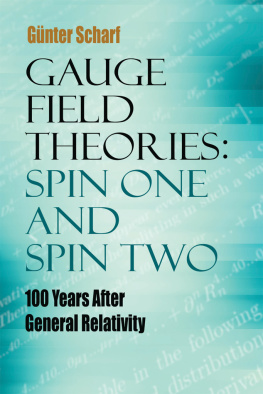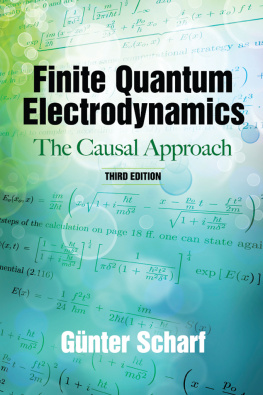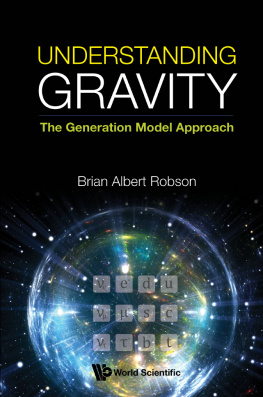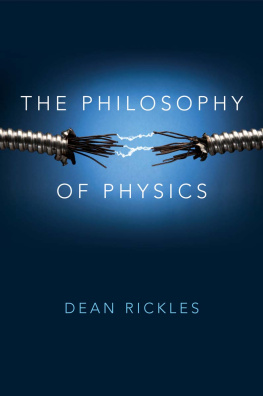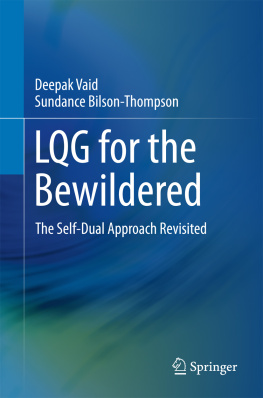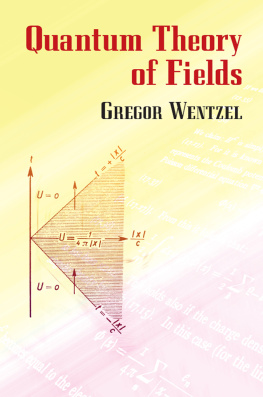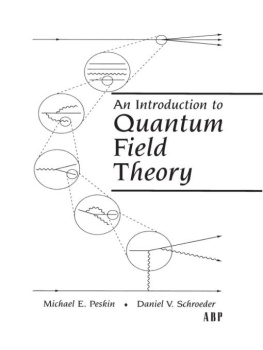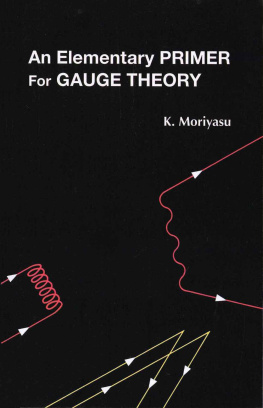GAUGE FIELD THEORIES: SPIN ONE AND SPIN TWO 100 Years after General Relativity Gnter Scharf Physics Institute, University of Zrich DOVER PUBLICATIONS, INC. Mineola, New York Copyright Copyright 2016 by Gnter Scharf All rights reserved. Bibliographical NoteGauge Field Theories: Spin One and Spin Two: 100 Years after General Relativity, first published by Dover Publications, Inc., in 2016, is a revised edition of Quantum Gauge Theories: A True Ghost Story, originally published in 2001 by John Wiley & Sons, Inc., New York. International Standard Book NumberISBN-13: 978-0-486-80524-5ISBN-10: 0-486-80524-7 Manufactured in the United States by RR Donnelley 80524701 2106 www.doverpublications.com Preface to the Dover Edition In 1916, Albert Einstein published his general theory of relativity in the Annalen der Physik 49. A hundred years later, this milestone event in the history of science will rightly be celebrated. However, the celebrations may be disturbed by physicists deep under the mountains of southern China who are trying to detect dark matter particles.
This hypothetical matter is necessary for the analysis of rotation curves in galaxies on the basis of standard general relativity. The Milky Way, too, must be full of dark matter. So far, however, the hunt for these new undiscovered particles has met with little success. If dark matter cannot be found, then the standard theory of general relativity is in serious trouble and the 100th anniversary celebrations are ruined. One should frankly admit that general relativity is not established on the scale of galaxies. Standard general relativity is a geometric theory.
Einstein postulated a fusion between geometry and gravity. In his theory, the metric tensor g describes both the gravitational field and the geometry of space and time. Here is the point where we deviate. Following H. Poincar (in Science and Hypothesis) we consider geometry as a convention and the gv(x) on the other hand describes the gravitational field only. The simplest geometry is the Minkowski space.
So all the fields in this book will be defined on Minkowski space, gv(x), as well. Otherwise, Einsteins equations remain unchanged. But now more solutions are physically possible, and there exist solutions with general form of the corresponding rotation curves. Consequently, in non-geometric general relativity no dark matter is needed for galactic dynamics and the same is true for cosmology. In this way the 2016 Einstein celebrations can be saved. This is the third edition of my book Quantum Gauge Theories: A True Ghost Story, which was published in 2001 by John Wiley & Sons, Inc.
The title of the second edition was changed to Quantum Gauge TheoriesSpin 1 and 2. This already indicates the increasing importance of gravity (spin 2) in the framework of gauge theories. In this third edition, a further small variation of the title was necessary. By choosing the title Gauge Field Theories instead of quantum gauge theories, we take into consideration that gravity mainly acts as a classical field (although we shall derive it as a quantum gauge field). So the last chapter Non-geometric General Relativity is 100% classical field theory. In fact, astrophysicists may read only this chapter to study the nonstandard approach to gravity and cosmology.
One may ask why I did not write one book for spin 1 concerning the microcosmos and a second one for spin 2 which is the macrocosmos. Maybe this has to be done in the future; at present it is my main aim to treat the electroweak and strong interactions and gravity on the same footing. In fact, it had quite often been said that the unification of gravity with quantum theory is the main open problem in theoretical physics. Our basic principle to achieve this unification is the appropriate formulation of quantum gauge invariance. In the case of the massless spin 2 theory, this gauge-theoretical foundation leads directly to the non-geometric interpretation of general relativity. So besides the dark matter problem, there is a strong theoretical reason to favor this approach above the standard geometrical theory.
To see the microcosmos (i.e., particle physics) and the Universe in the large be governed by the same basic principle gives great intellectual satisfactionor even more. Zrich, April 2015 Gnter Scharf Another dark matter search is being performed by the XENON Collaboration under the Gran Sasso mountain in Italy. Preface (2011) It has quite often been said that the unification of gravity with quantum theory is the main open problem in theoretical physics. The subtitle spin one and two means that the book is concerned with this problem, because spin-1 gauge theories include the successful standard theory of electroweak and strong interactions and spin-2 is gravitation. In fact we shall see that the notion of quantum gauge theory gives the natural framework for both spin-1 (non-abelian) gauge theories and gravity. Quantum gauge theories are mostly treated with the functional method.
For writing down the basic functional integral a classical Lagrangian must be given. This is a disadvantage because the correct choice of the classical Lagrangian (including ghost, Higgs and auxiliary fields) requires great skill. The resulting final theory has some artificial ad-hoc character so that it lacks strong evidence of being truly fundamental. Indeed, it is a common belief today that quantum gauge theory might only be the low energy limit of a more fundamental theory like string theory for example. A strong support for this belief comes from the necessity to include gravity. In this monograph we use an alternative method which does not require any classical Lagrangian.
This gives us the chance to discover new physics, and we shall see this in when we consider massive gravity. In the spin-1 case we shall recover the results of the standard theory in all details. This now gives us stronger evidence that quantum gauge theories may be really fundamental. In the spin-2 case with mass zero we recover the coupling given by general relativity, of course, but we also find a very interesting modification of it when we consider the massless limit of massive gravity. The reader now certainly asks: What is the basis of this alternative theory if we do not use a classical Lagrangian ? Answer: It is the proper definition of gauge invariance for the S-matrix. The S-matrix is defined on the space of free asymptotic fields which is the only thing that must be given.
On these free quantum fields one introduces a gauge structure which involves ghost fields and further auxiliary fields if some gauge fields are massive. The gauge structure is given by the gauge variations of the asymptotic fields. These gauge variations are the quantum counterpart of classical gauge transformations and general coordinate transformations in general relativity. There is a formal similarity with the BRS transformation in the functional method. However, the BRS transformation operates on the interacting fields, and these can only be constructed if the coupling, i.e. the classical Lagrangian is given.
We will not introduce interacting fields in this monograph. The gauge variation will be denoted by dQ where the suffix Q indicates that it is the (super)commutator with a nilpotent gauge charge Q (Q2= 0). The gauge charge Q serves for two purposes: (i) It defines the physical subspace of the big Fock space generated by the asymptotic fields. (ii) dQ allows to calculate the gauge variation of the S-matrix. By S-matrix we always mean the scattering operator S(g) where the coupling is smeared with a (Schwartz) test function g: T(x)g(x)dx. This g(x) is a natural infrared regulator, so that
Next page
